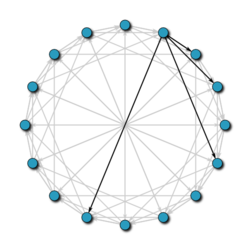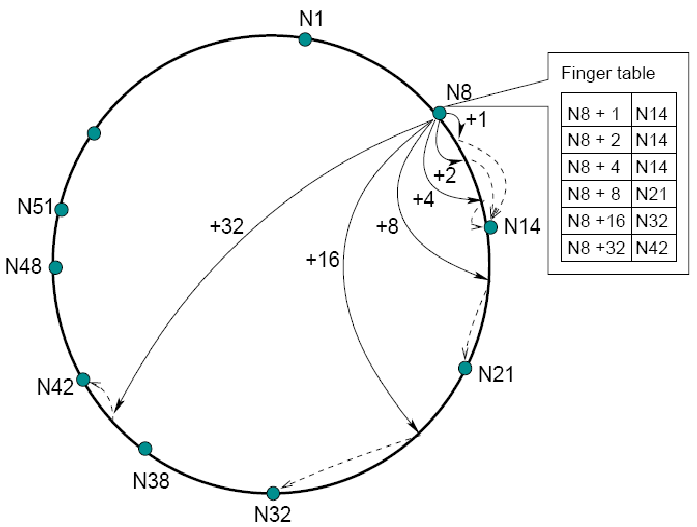This project is an implementation of the Suzuki-Kasami token based distributed systems algorithm.
The algorithm is most simply explained on the following linkg:
https://www.geeksforgeeks.org/suzuki-kasami-algorithm-for-mutual-exclusion-in-distributed-system/
The base is a chord system which is holding servents (server and client at the same time) which
work with textual files. Suzuki-Kasami ensures only one added servent is adding another servent at a time
and that it doesn't interfere with file adding. System also implement a fail recovery system
which in ideal situations should make the system readjust after a servent has died. For more information
a documentation file "RafBook dokumentacija.pdf" in serbian is provided.
The bootstrap server is a simple server with the sole purpose of giving the new servent another
already in the system present servent which will add the it. Bootstrap server doesn't know anything
of the architecture in the system.
The idea of the chord system is that considering we're on a distributed system and want to be using
some sort of DHT(distributed hash table), we can implement a algorithm that would be faster by
searching for nodes(or servents) on which to store the data in log dependent time instead of linear
dependernt time.
Looking at the picture we can see that we can have a node which could keep track of its successors that
are 2^n away from it. Each node keeps track of its successors by a successors table which has to be updated
each time a new node is present in the system. This adding of nodes and successor table update needs to take
place synchronously. This is where the Suzuki-Kasami algorithm comes into place.
Each node can add another node only if it holds the token, so each time a node wants to add another node it
requests the token, waits for it and when it receives it, all the actions mentioned above take place.
Then it can give away the token to the next node waiting for it. How does it know which node to pick?
You can check that out on the link provided for the Suzuki-Kasami algorithm.
Files are added based on the chord system, that is in the current configuration of the system which can be found in the
chord/servent_list.properties file we have a chord size of 64. This means there can be a maximum o 64 summary of files and nodes.
Nodes will add files in log time based on their name. For simplicity every file is given a chord number (0-63), so the user
should keep an eye that the number doesn't collide with a node.
A sample of the servent_list.properties file would be:
root=D:\\Java (Programming)\\IntelliJprojects\\RAFBook\\root
ip=localhost
weak_limit=4000
strong_limit=10000
servent_count=5
chord_size=64
bs.port=2000
servent0.port=1100
servent1.port=1200
#use the next one to test collisions - it will clash with 1100
#servent1.port=1164
servent2.port=1300
servent3.port=1400
servent4.port=1600
Where root is the folder in which files will be held, ip is ip where the communication will take place
(hardcoded localhost, needs code change to work on other networks), weak and strong limits are for
how long a servent should be waited to pong for failure detection, servent_count is the number of servents
chord_size is the size of the chord system, bs.port is the bootstraps server port and the rest are servent ports.
A sample of a servent config is:
pause 10000
add_file 46.txt private
pause 20000
get_file 25.txt
pause 6000
remove_file 46.txt
pause 5000000
For detailed specification of the commands refer to the documentation provided in "RafBook dokumentacija.pdf",
it's in serbian though.
If a node was to fail, it's successor should notice this. Every servents gets pinged by its successor every 5s.
If the pong fails to reach the successor it contacts the suspicious servents predecessor, if it can't reach the
suspicious servent it is marked for removal and the system starts reconfiguring. The failure recovery isn't fully
operational as it doesn't work in some cases and one of those is two neighbor servents die at the same time.

